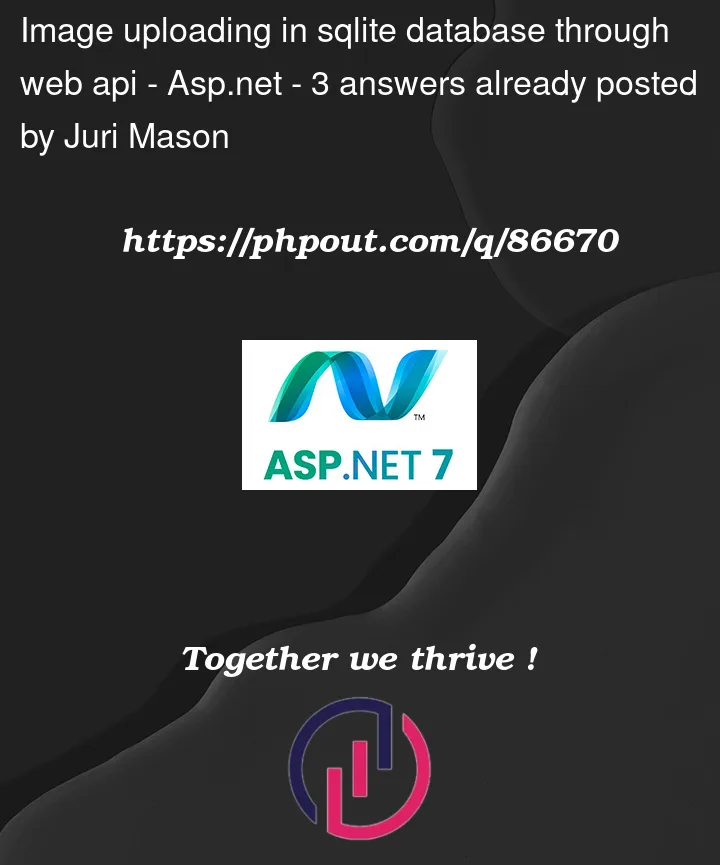I’m creating a Web App in c# and I need to upload an image from an html form into my database.
I tried to do it this way but the binaryformatter can’t be used in api controllers because of security issues.
[HttpGet("imageUploadEndpoint")]
public IActionResult bytesImage([FromForm] object image)
{
BinaryFormatter bf = new BinaryFormatter();
MemoryStream ms = new MemoryStream();
bf.Serialize(ms, image);
//ms.ToArray() should then be uploaded to my sqlite database via entityframework in byte[] format
return Ok(ms.ToArray()); //this return was just to see what happened
}
—IMAGE UPLOAD TO API RESOLVED—
Now I need to put images inside an sqlite db with entityframework. How could I do it?




3
Answers
I solved the upload this way:
and i'll put the img object in the sqlite db as a BLOB data value.
Uploading an image to a GET endpoint is not a good idea because they have no request body and are not supposed to change the server state (MDN).
Instead, I would recommend you to use a POST endpoint and data binding to
IFormFileCollection. I am using this inside of a standard MVC controller but don’t know whether it works in anApiController, too.In one of my open source projects you can find the full implementation of an image upload with ASP.NET Core MVC (GitHub).
Update for storing in database
Although I would recommend to store photos as files, you could create an EF Core database context and an entity like this:
Now you can extend your controller:
My Solution is like –
I tried using minimal API (.net 7)
Below is the Model
{
public IFormFile? File { get; set; }
public static async ValueTask<Photo?> BindAsync(HttpContext context, ParameterInfo parameter)
{
var form = await context.Request.ReadFormAsync();
var file = form.Files["file"];
return new Photo
{
File = file
};
}
}
Also, my user profile data model is like this:
}
Then used minimal API endpoints: